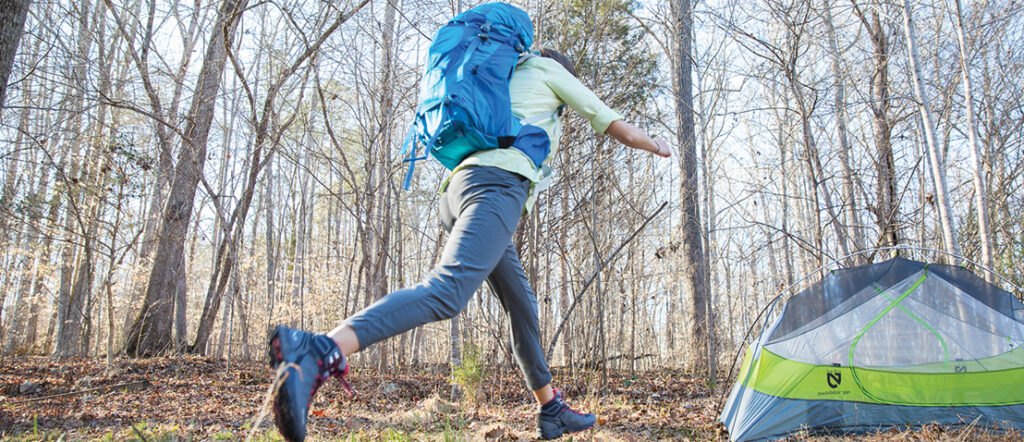
Travis Zarins seems puzzled by the question.
When did Great Outdoor Provision Co. discover women?
“Well,” says Travis after giving the matter some thought, “we’ve known about them all along”
It’s a legitimate question, given that some retailers in the outdoors industry have made the apparent discovery of women in the outdoors a focus of their business. Or at least their advertising.
“We’ve always thought the women’s market was super important,” says Travis, Great Outdoor’s Vice President of Merchandise and the person ultimately responsible for what goes on the store’s shelves. “I think it goes back to Tom [Valone, who founded the company in 1972] being out there, backpacking, seeing women out backpacking as well, and realizing we should sell to them.”
Good business, plain and simple. Especially when you consider that, according to the annual Outdoor Participation Report by The Outdoor Foundation, females made up close to half (46 percent) of all outdoor participants in 2017.
For starters, having a workforce that nearly reflects that participation — about 45 percent of Great Outdoor Provision’s employees are women — keeps the outfitter especially attuned to having the right clothes and gear. Having women in key buying positions from the start helped as well: the first sportswear buyer was female, “so was my predecessor,” says Travis.
Finding women-specific gear
“The challenge was always finding someone who made women-specific products,” says Travis.
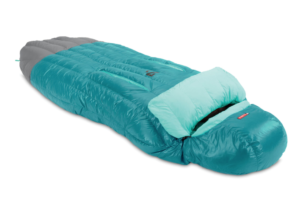
Forty years ago, there was one kind of backpack, with an awkward external frame built for a guy; one kind of boot, built with the male foot in mind; one kind of sleeping bag, the narrow mummy that could be a little snug in the hips.
“I still remember selling unisex rainj ackets,” Travis says of early attempts to appeal to female hikers, attempts that were more in name only. “They had really long arms, so they were still basically for men. I think they figured most people were happy with good enough.”
Gradually, though, Travis began seeing incremental change.
“I remember sitting in a clinic maybe 10 years ago — might even have been a little longer ago than that — and they were talking about women-specific sleeping bags with more insulation in the hips and footbox. I remember thinking, ‘That is really a cool idea.’ ”
More recently, Nemo has pushed that concept with spoon-shaped bags that emphasize comfort and movement, as well as added insulation. The shape was a break from the traditional mummy design, adding extra room that might have been seen as extra space to heat. That didn’t concern Travis when he decided to add the bags.
“That’s probably not a big concern where we’re located and what our backpackers might be using it for,” he says. “For a lot of people, it’s pretty aspirational just to get three days off in the spring and summer” — winter backpacking not as much. “It will serve them fine.”
Sleeping pads, says Travis, have also developed to better serve the female camper, with added insulation.
Hiking boots for the female foot
Perhaps the most appreciated advance in women-specific gear is in footwear. Firm fitting hiking shoes and boots are the crux of a good experience on the trail, and footwear, says Travis, has evolved to better fit women.
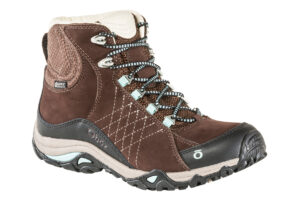
“It used to be that if a manufacturer made a boot for women, it was basically the same version of the men’s boot,” says Travis. “Not a lot of difference.
“Now, some are making a boot that they only make for women. Obōz, for instance, makes the Sapphire, a true, straight-up women’s boot, a boot, says the manufacturer, that “isn’t only about women’s specific fit; it’s about women’s specific comfort and soul.” It features lower volume with a sculpted mid-foot and a women’s specific forefoot and toe box.
“Women’s packs, too,” says Travis. “The hip belts are different, the shoulder straps, and the torso length as well.
Even women’s clothing becomes more … womanlike
You might think that women’s clothing would have always been women-specific. Not always the case: taking hiking pants, for instance.
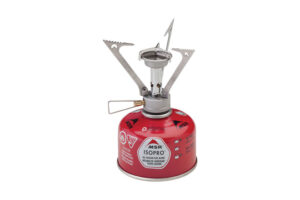
“Kuhl has done a great job with women’s pants, creating the Kühl Kurve, which conforms more toward a woman’s shape.”
Travis says women’s clothing accounts for about 45 percent of the Great Outdoor’s inventory, while about 35 percent of clothing is women-specific. (For “hard goods” — packs, for instance — about 35 percent of the store’s inventory is geared toward women.)
Travis says he’s even seen kayak manufacturers who market lighter kayaks aimed at women. “Not that they can’t handle a heavier boat,” he adds.
Are there areas where he hasn’t seen women-specific products emerge?
“Well,” says Travis giving the question a moment of thought, “I still haven’t seen a women’s stove or tent.”
More women than men on the trail
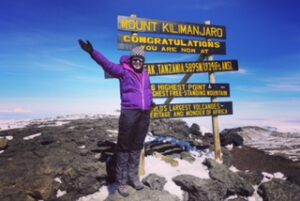
The store’s hiking and backpacking programs, contracted through GetGoingNC LLC, are even more reflective of the number of women outdoors. Launched in 2013, more than half the participants in its GetHiking! programs are female, while the number is closer to 75 percent for its GetBackpacking! programs.
The numbers don’t surprise Travis.
* * *
